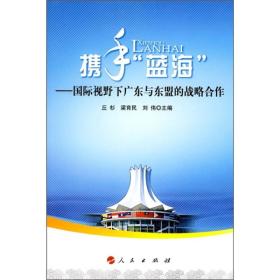
中国创业观察
¥ 52 5.3折 ¥ 98 全新
仅1件
广东广州
认证卖家担保交易快速发货售后保障
作者高建;程源;牟睿;董雅莉
出版社清华大学出版社
出版时间2022-12
版次1
装帧其他
货号59118611
上书时间2024-12-14
- 最新上架
商品详情
- 品相描述:全新
图书标准信息
- 作者 高建;程源;牟睿;董雅莉
- 出版社 清华大学出版社
- 出版时间 2022-12
- 版次 1
- ISBN 9787302621973
- 定价 98.00元
- 装帧 其他
- 开本 16开
- 纸张 胶版纸
- 页数 340页
- 字数 490千字
- 【内容简介】
- 本书是基于2001-2020年全球创业观察中国研究收集的成人创业调查数据、专家访谈数据和中国的创业活动数据,对中国创业活动进行的结构分析。本书把创业活动的结构细分为特征结构、质量结构、区域结构、国际多边结构和创业环境五个方面。通过对创业活动的结构分析,我们可以深化对创业者和创业活动的动机、创业行为、创业过程、创业活动的影响因素、创业成效和创业政策的认识,激发系统思考和探索更有意义的理论和实践问题,助力创业活动的高质量发展,提升创业活动对增强经济社会持续活力的实质性作用。
- 【作者简介】
-
高建,清华大学经济管理学院创新创业与战略系教授,博士生导师,清华大学二十国集团(G20)创业研究中心主任,全球创业观察中国团队负责人。近年主要研究工作包括新企业与企业家、创业投资、未来商业形态、区域创业生态、G20创业行动计划实施等。相关著作包括由清华大学出版社出版的全球创业观察中国报告(2002、2003、2005、2007)和《二十国集团(G20)创业服务报告》等。
程源,博士,清华大学经济管理学院创新创业与战略系系主任,博士生导师。主要研究领域:信息技术管理、服务创新、数字经济、技术经济学、创业战略与制度环境等。在国际管理学顶级学术期刊、国内重要期刊和顶级国际会议上发表论文60余篇,出版著作多部。曾获北京市哲学社会科学优秀成果一等奖、高等学校科学研究优秀成果三等奖等多次。
牟睿,清华大学二十国集团(G20)创业研究中心研究员,2013年加入全球创业观察(GEM)中国团队以来,长期从事GEM研究。发表的研究成果涉及国际创业、创业政策、创业能力、双创示范基地等领域。
董雅莉,清华大学二十国集团(G20)创业研究中心研究员,参与多项人力资源和社会保障部、中国科学技术协会等与创新创业相关的科研课题,以及全球创业观察(GEM)中国项目的研究工作。 - 【目录】
-
第1篇导论
绪言
0.1创业活动的结构
0.2数据来源
0.3本书的篇章结构
第1章对创业活动的结构认识
1.1创业活动及其表现
1.2全球创业观察概念框架的组成
1.3创业活动的结构指标
1.4全球创业观察的专题研究
第2篇特 征 结 构
第2章青年创业
2.1青年创业的年龄分布
2.2青年创业的特征
2.3青年创业的质量
2.4青年对待创业的态度
2.5小结
第3章女性创业
3.1女性创业的活跃程度及趋势
3.2我国女性创业活动的结构特征
3.3我国女性创业活动的质量特征
3.4女性对待创业活动的态度
3.5小结
第4章老年创业
4.1中国老年创业概貌
4.2中国老年创业质量
4.3影响老年创业的主要因素
4.4小结
第5章社会创业
5.1广义的社会创业活动
5.2狭义的社会创业活动
5.3社会创业活动的质量
5.4社会创业活动的特征
5.5小结
第6章服务业创业
6.1全球创业观察研究的行业分类及服务业构成
6.2我国服务业创业的构成和发展趋势
6.3不同类型服务业的创业
6.4服务业创业活动产业分布的国际比较
6.5小结
第3篇质 量 结 构
〉〉中国创业观察——创业活动的结构分析
目录〈〈
第7章创新型创业
7.1新产品/新服务
7.2新市场
7.3创新指数
7.4不同时期创新型创业者的特征
7.5创新型创业的社会网络
7.6创新型创业的国际化
7.7小结
第8章高成长创业
8.1高预期型和高成长型创业活动
8.2高成长创业活动的特征
8.3高成长创业活动的质量
8.4小结
第9章国际创业
9.1我国创业的国际化程度
9.2我国国际创业活动的国际比较
9.3国际创业者的自我效能
9.4天生国际化的创业企业
9.5不同类型创业活动的国际创业
9.6小结
第10章创业带动就业效应
10.1我国创业活动的就业效应及趋势
10.2创业带动就业能力的国际比较
10.3不同特征结构创业活动的就业效应
10.4不同质量结构创业活动的就业效应
10.5创业的结构和质量特征对创业带动就业效应的影响
10.6小结
第11章创业退出
11.1创业退出的变化趋势
11.2创业退出的原因
11.3创业退出的群体特征
11.4早期创业活动的退出
11.5小结
第4篇区 域 结 构
第12章区域创业活动
12.1我国区域创业活动的水平及态势
12.2区域创业活动差异的影响因素
12.3两类地区创业活动影响因素的分析
12.4小结
第13章我国主要城市的创业环境
13.1主要城市创业环境评价体系
13.2主要城市创业环境评价结果
13.3主要城市创业环境的区域差异
13.4小结
第5篇国际多边结构
第14章二十国集团和金砖国家创业活动的比较
14.1创业活动的共性
14.2创业活动的差异
14.3创业活动的环境比较
14.4小结
第6篇生态环境结构
第15章创业环境
15.1创业环境综合指数
15.2创业环境条件
15.3我国创业环境的变化
15.4小结
第16章创业文化
16.1个人认知
16.2社会认知
16.3社会和文化规范
16.4小结
附录1全球创业观察的方法论概述
附录2历年全球创业观察中国报告发布稿辑要
Contents
Part ⅠIntroduction
Preface3
0.1Structure of Entrepreneurial Activities3
0.2Data Sources4
0.3Chapter Structure of The Book 5
Chapter 1Structural Understanding of Entrepreneurial Activities7
1.1Entrepreneurial Activities and Their Output 7
1.2Composition of the GEM Conceptual Framework8
1.3Structural Indicators of Entrepreneurial Activities9
1.4GEM Special Research 13
Part ⅡCharacteristics Structure
Chapter 2Youth Entrepreneurship17
2.1Age Distribution of Youth Entrepreneurship 17
2.2Characteristics of Youth Entrepreneurship 18
2.3Quality of Youth Entrepreneurship 24
2.4Attitudes of Youth Towards Entrepreneurship 27
2.5Summary 33
Chapter 3Women Entrepreneurship 34
3.1Level of Women Entrepreneurship Activities and Trends 34
3.2Characteristics of Women Entrepreneurship in China 35
3.3Quality of Women Entrepreneurship in China 40
3.4Attitudes of Women Towards Entrepreneurship 43
3.5Summary 48
Chapter 4Senior Entrepreneurship 50
4.1Overview of Senior Entrepreneurship in China 50
4.2Quality of Senior Entrepreneurship in China 56
4.3Main factors affecting Senior Entrepreneurship 61
4.4Summary64
Chapter 5Social Entrepreneurship 66
5.1Social Entrepreneurship in Broad Definition 66
5.2Social Entrepreneurship in Narrow Definition 69
5.3Quality of Social Entrepreneurship 71
5.4Characteristics of Social Entrepreneurship74
5.5Summary80
〉〉中国创业观察——创业活动的结构分析
Contents〈〈
Chapter 6Service Sectors Entrepreneurship82
6.1Classification and Composition of Service Sector in GEM82
6.2Composition and Trends of Service Sectors Entrepreneurship
in China 83
6.3Entrepreneurial Activities in Different Service Sectors 86
6.4Global Comparison in Distribution of Service Sectors
Entrepreneurship95
6.5Summary99
Part ⅢQuality Structure
Chapter 7Innovationbased Entrepreneurship103
7.1New Products/Services103
7.2New Market106
7.3Innovation Index106
7.4Characteristics of Innovative Entrepreneurs in Different Stages107
7.5Social Networks of Innovationbased Entrepreneurship109
7.6Internationalization of Innovationbased Entrepreneurship110
7.7Summary114
Chapter 8HighGrowth Entrepreneurship116
8.1HighExpectation and HighGrowth Entrepreneurship116
8.2Characteristics of HighGrowth Entrepreneurship118
8.3Quality of HighGrowth Entrepreneurship123
8.4Summary134
Chapter 9International Entrepreneurship135
9.1Level of Internationalization of Entrepreneurship in China135
9.2Global Comparison in International Entrepreneurship137
9.3SelfEfficacy of International Entrepreneurs140
9.4Born Global Startups142
9.5Internationalization of Different Types of Entrepreneurial
Activities145
9.6Summary150
Chapter 10Employment Effects of Entrepreneurship152
10.1Employment Effects of Entrepreneurship in China and
their Trends152
10.2Global Comparison in Capacity of Job Creation of
Entrepreneurship154
10.3Job Creation Capacity of Entrepreneurship with Different
Characteristics157
10.4Job Creation Capacity of Entrepreneurship with Different
Quality162
10.5Characteristics and Quality impacts on Job Creation of
Entrepreneurship165
10.6Summary168
Chapter 11Business Exits170
11.1Changing Trends of Business Exits170
11.2Reasons for Business Exits171
11.3Group Characteristics of Exited Startups175
11.4Business Exits of EarlyStage Entrepreneurial Activities181
11.5Summary186
Part ⅣRegional Structure
Chapter 12Regional Entrepreneurial Activities189
12.1Level and Trends of Regional Entrepreneurial Activities in
China189
12.2Factors of Difference in Regional Entrepreneurial Activities193
12.3Factors Influencing the Entrepreneurial Activities in two
types of regions196
12.4Summary197
Chapter 13Entrepreneurship Environment of Major Cities in China199
13.1Evaluation System199
13.2Evaluation Results200
13.3Regional Difference208
13.4Summary214
Part ⅤInternational Multilateral Structure
Chapter 14Comparison in Entrepreneurial Activities Between G20 and
BRICS217
14.1Commonalities in Entrepreneurial Activities218
14.2Differences in Entrepreneurial Activities229
14.3Comparison in Environments for Entrepreneurial Activities239
14.4Summary249
Part ⅥEcosystem Structure
Chapter 15Entrepreneurship Environment253
15.1Comprehensive Index for Entrepreneurship Environment
of China253
15.2Framework Conditions of Entrepreneurship Environment of
China254
15.3Changes in Entrepreneurship Environment in China264
15.4Summary268
Chapter 16Entrepreneurial Culture270
16.1SelfPerceptions270
16.2SocialPerceptions280
16.3Social and Cultural Norms287
16.4Summary290
Appendix 1Overview of GEM Methodology291
Appendix 2Summary of Public Releases of GEM China Reports Over Time292
点击展开
点击收起
— 没有更多了 —












以下为对购买帮助不大的评价